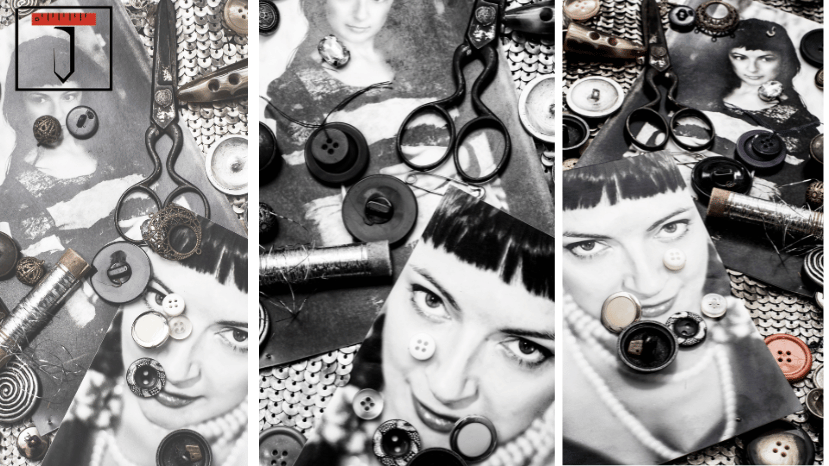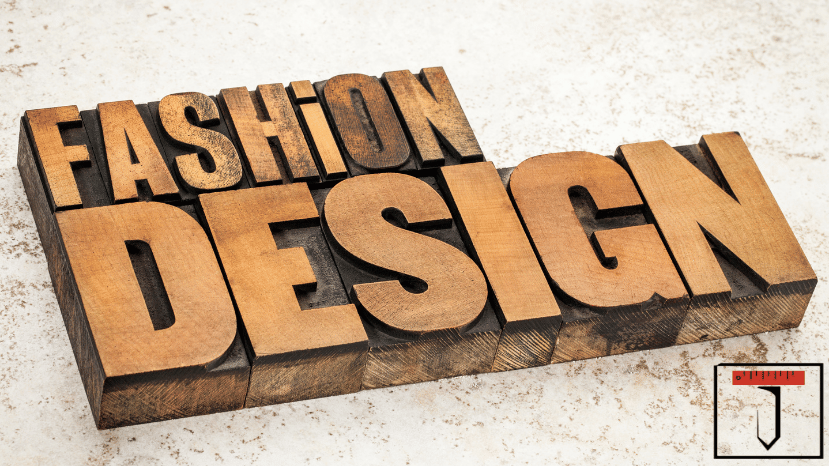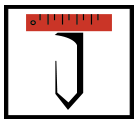Table of Contents

In Fashion Designing, Our institute is more than just a place of learning—it’s a creative sanctuary where students Start on a transformative journey of exploration, experimentation, and expression. Whether you’re a budding designer with a passion for fashion or someone looking to enhance their artistic potential, you’ve come to the right place.
However, Toolbox Creativity is a center for creativity, teamwork, and inspiration outside of the classroom. As they create their own distinctive design aesthetic, students are encouraged to push boundaries, think creatively, and embrace their originality in our encouraging learning atmosphere.
We are here to support, encourage, and empower you every step of the way, whether your goals are to start your own fashion label, work in high couture, or just hone your creative talents.
So, welcome to Toolbox Creativity Institute—a place where passion meets purpose, imagination knows no bounds, and the journey to becoming a fashion innovator begins. Together, let’s unlock the endless possibilities of design and shape the future of fashion
What is Fashion Designing?
The art of fashion designing involves producing and designing apparel, footwear, and accessories based on personal tastes, cultural influences, and current trends. It requires a blend of technical proficiency, artistic ability, and material and textile understanding.
what you can expect from a top-notch Fashion Designing course in Hyderabad?
Creative Design Process: Understanding the design process from concept development to final execution. This includes brainstorming ideas, researching inspiration, sketching initial designs, and refining them into polished concepts.
Pattern Making and Garment Construction: Learning how to create patterns from scratch or modify existing patterns to achieve desired designs. Understanding garment construction techniques such as sewing, stitching, and finishing.
Textile Science and Technology: Delving into the science behind textiles, including fabric composition, properties, weaving techniques, dyeing, printing, and finishing processes. Exploring sustainable and eco-friendly practices in textile production.
Fashion Illustration and Rendering: Developing proficiency in fashion sketching, croquis drawing, and rendering techniques using various mediums such as pencils, markers, watercolors, or digital tools. Communicating design ideas effectively through visual representation.
Fashion History and Theory: Studying the evolution of fashion through different eras and cultures, analyzing influential designers, movements, and socio-cultural factors that shape fashion trends. Understanding the significance of historical references in contemporary design.
Fashion Merchandising and Marketing: Exploring the business side of fashion, including market research, trend forecasting, brand positioning, retailing, merchandising strategies, and consumer behavior analysis. Developing skills to create marketable fashion collections and promote them effectively.
CAD Software Skills: Mastering computer-aided design software such as Adobe Photoshop, Illustrator, or specialized fashion CAD programs for digital pattern drafting, technical drawings, and 3D modeling.
Portfolio Development and Presentation: Building a professional portfolio showcasing your best design work, projects, and technical skills. Learning how to present your portfolio effectively in interviews, exhibitions, or online platforms to attract potential clients or employers.
Industry Internships and Collaborations: Getting hands-on experience through internships or collaborations with fashion companies, designers, or retail brands. Gaining insights into the real-world workings of the fashion industry and building valuable connections.
Entrepreneurship and Career Development: Acquiring knowledge and skills to pursue entrepreneurial ventures in fashion design, such as launching your own fashion label, boutique, or online store. Understanding career options in various sectors of the fashion industry and preparing for job opportunities or freelance work.
Some extra elements that could enhance a fashion designing course
Fashion Photography and Visual Communication: Introducing students to the art of fashion photography and visual storytelling. This includes understanding lighting techniques, composition, mood creation, and post-production editing to effectively capture and showcase fashion designs.
Couture Techniques and Luxury Fashion: Exploring the intricate craftsmanship and specialized techniques used in couture fashion and luxury design. Students may learn about hand-sewing, embroidery, beading, lacework, and other high-end couture skills.
Costume Design for Film, TV, and Theater: Offering specialized training in costume design for various entertainment mediums such as film, television, theater, or opera. Students learn how to create costumes that reflect character personalities, historical eras, and narrative themes.
Fashion Technology Integration: Integrating technology into fashion design through wearable tech, smart textiles, interactive garments, and augmented reality (AR) fashion experiences. Students gain exposure to emerging technologies and explore their creative applications in fashion.
Fashion Retail Analytics and Data-driven Decision Making: Teaching students how to leverage data analytics tools and consumer insights to make informed decisions in fashion retail, merchandising, and product development. This includes analyzing sales data, market trends, and customer preferences.
Fashion Sustainability Advocacy and Activism: Empowering students to become advocates for sustainability and ethical practices in the fashion industry. This involves raising awareness about environmental and social issues, promoting sustainable fashion brands, and driving positive change.
Fashion Collaboration Projects with NGOs or Social Enterprises: Collaborating with non-governmental organizations (NGOs), social enterprises, or community groups on fashion projects that address social or environmental challenges. Students gain practical experience while making a positive impact on society.
Fashion Diversity and Inclusion Initiatives: Promoting diversity, inclusivity, and representation in fashion design by celebrating diverse body types, ethnicities, genders, and cultural backgrounds. Students explore the intersection of fashion with identity, culture, and social justice.
Fashion Innovation Hackathons or Design Challenges: Organizing hackathons or design challenges where students collaborate to solve real-world fashion problems or create innovative design solutions within a limited timeframe. This fosters creativity, teamwork, and critical thinking skills.
Fashion Industry Immersion Program: Offering an intensive immersion program where students spend a semester or academic year working full-time in the fashion industry. This hands-on experience provides valuable industry exposure, networking opportunities, and professional development.
For More Information You Can Contact Us
Whom Should Pursue Fashion Designing?
Selecting the Best Fashion Design Course that meets your requirements and goals is crucial if you’re thinking about pursuing a career in the field, especially in Hyderabad. Here are several reasons to consider a career in fashion design, along with information on Hyderabad’s top schools:
Passion for Fashion: If you have a genuine interest in clothing, trends, colors, fabrics, and creativity, then fashion designing could be an ideal career choice for you. Pursuing a career in fashion allows you to express your creativity and artistic vision through clothing and accessories.
Opportunities for Creativity: Fashion designing offers endless opportunities for creativity. Whether you’re designing casual wear, formal attire, haute couture, or accessories, you’ll have the chance to showcase your unique style and perspective.
Creative Individuals: If you have a flair for creativity and enjoy expressing yourself through clothing, fashion designing could be an excellent career path for you. Fashion designers have the opportunity to create unique and innovative designs that reflect their artistic vision.
Artistic Talent: Individuals with a natural talent for drawing, sketching, and visual arts often excel in fashion designing. The ability to sketch fashion illustrations and visualize garment designs is a crucial skill for aspiring fashion designers.
Interest in Fashion Trends: If you have a keen interest in fashion trends, styles, and aesthetics, pursuing a fashion designing course can help you deepen your knowledge and understanding of the industry. Fashion designers need to stay updated on current trends and consumer preferences to create designs that resonate with their target audience.
Passion for Clothing and Textiles: Fashion designing courses cover various aspects of garment construction, fabric selection, and textile science. If you have a passion for clothing and textiles and enjoy working with different fabrics and materials, you’ll find the hands-on aspects of fashion designing courses particularly rewarding.
Attention to Detail: Fashion designing requires meticulous attention to detail, precision, and craftsmanship. From pattern making to garment fitting, every aspect of the design process requires careful attention to ensure the final product meets quality standards and exceeds customer expectations.
Facilities We Provide In Fashion Designing Course With-Toolbox Creativity
As a fashion designing institute, Toolbox Creative would prioritize providing a comprehensive range of facilities and resources to support students in their educational journey and creative endeavors. Here’s an elaboration on some of the key facilities that Toolbox Creative might offer:
Sewing Labs: Well-equipped sewing labs with industrial sewing machines, cutting tables, and garment construction tools allow students to learn and practice essential sewing techniques, pattern making, draping, and garment assembly under the guidance of experienced instructors.
Textile Library: A diverse collection of fabric samples, swatches, and reference books in the textile library enables students to explore different types of fabrics, textures, patterns, and finishes, enhancing their understanding of textile science and material selection in fashion design.
Fashion Design Library: A well-stocked fashion design library containing a wide range of books, magazines, journals, and digital resources on fashion history, theory, culture, and trends. Students can use the library for research, inspiration, and academic projects, enriching their understanding of the fashion industry and its historical and cultural contexts.
Accessories Design Workshop: Specialized workshop facilities for accessories design, including jewelry making, handbag construction, shoe design, and millinery. Students can experiment with various materials, techniques, and embellishments to create unique and innovative accessories that complement their fashion collections.
Photography Studio: A fully equipped photography studio with professional lighting, backdrops, cameras, and editing software for students to capture high-quality images of their fashion designs, fashion shoots, and portfolio projects. Photography workshops and tutorials help students develop skills in fashion photography and visual communication.
Green Design Studio: A dedicated studio space focused on sustainable fashion design, eco-friendly materials, and ethical production practices. Students can explore sustainable design principles, upcycling techniques, and eco-conscious fashion solutions, promoting environmental responsibility and social impact in their design process.
Student Lounge and Collaboration Spaces: Comfortable student lounge areas, breakout spaces, and collaboration zones provide students with opportunities to relax, socialize, and collaborate on group projects, fostering a sense of community, creativity, and peer support within the institute.

10 Career path you can choose after the Course?
Fashion Designer: As a fashion designer, you can work for fashion houses, apparel brands, or design firms, creating original clothing, accessories, or footwear collections. Fashion designers conceptualize designs, sketch fashion illustrations, select fabrics, oversee garment construction, and ensure the final products align with market trends and brand aesthetics.
Fashion Blogger/Influencer: Fashion bloggers and influencers create content about fashion, style, and lifestyle topics on their blogs, social media platforms, and YouTube channels. They share fashion tips, outfit inspiration, product reviews, and trend forecasts, influencing consumer purchasing decisions and shaping fashion trends through their digital presence.
Fashion Illustrator: Fashion illustrators specialize in creating hand-drawn or digital fashion illustrations that showcase garment designs, silhouettes, and details. They work closely with fashion designers, stylists, and merchandisers to visualize design concepts, develop mood boards, and communicate design ideas to clients, manufacturers, or the public.
Fashion Merchandiser/Buyer: Fashion merchandisers and buyers are responsible for planning, sourcing, and purchasing merchandise for retail stores, fashion boutiques, or online platforms. They analyze market trends, consumer preferences, and sales data to make informed buying decisions, negotiate with suppliers, and ensure that the product assortment aligns with the brand’s target audience and marketing strategy.
Stylist: Fashion stylists curate and coordinate clothing and accessories for editorial photo shoots, fashion shows, advertising campaigns, or celebrity appearances. They work closely with photographers, models, makeup artists, and creative directors to create visually compelling fashion looks that convey a specific theme, mood, or brand image.
Pattern Maker/Technical Designer: Pattern makers and technical designers specialize in creating garment patterns, prototypes, and technical specifications for production. They use computer-aided design (CAD) software or traditional pattern drafting techniques to develop accurate patterns that translate design concepts into wearable garments, ensuring proper fit, sizing, and construction techniques.
Fashion Entrepreneur: As a fashion entrepreneur, you can start your own fashion label, boutique, or design studio, bringing your creative vision to life and building a brand identity. Fashion entrepreneurs handle various aspects of business operations, including product development, branding, marketing, sales, and financial management, with the goal of establishing a successful and sustainable fashion business.
Fashion Marketing/PR Specialist: Fashion marketing and public relations (PR) specialists are responsible for promoting fashion brands, products, and events to target audiences through strategic marketing campaigns, social media initiatives, press releases, and publicity stunts. They work to enhance brand visibility, generate buzz, and cultivate positive relationships with media outlets, influencers, and consumers.
Fashion Educator/Instructor: Fashion educators teach courses in fashion design, textiles, merchandising, or related subjects at colleges, universities, or fashion institutes. They share their expertise, industry insights, and practical skills with aspiring fashion professionals, preparing students for careers in various sectors of the fashion industry.
Fashion Consultant: Fashion consultants provide personalized fashion advice, styling services, and wardrobe solutions to individual clients, celebrities, or corporate clients. They offer guidance on fashion trends, outfit coordination, and personal branding, helping clients express their style preferences and enhance their overall image and confidence.

Leave a Reply
You must be logged in to post a comment.